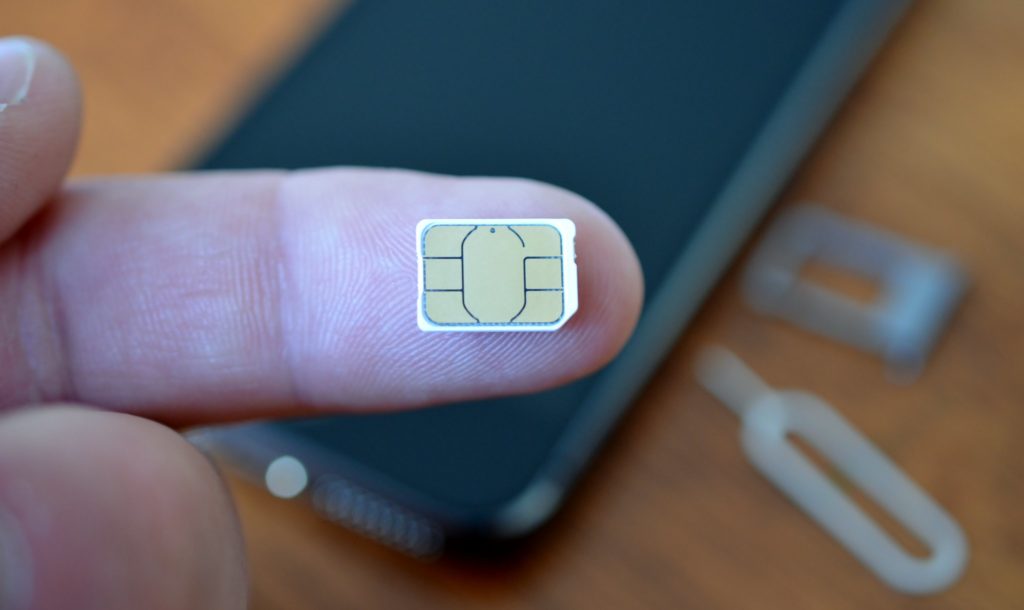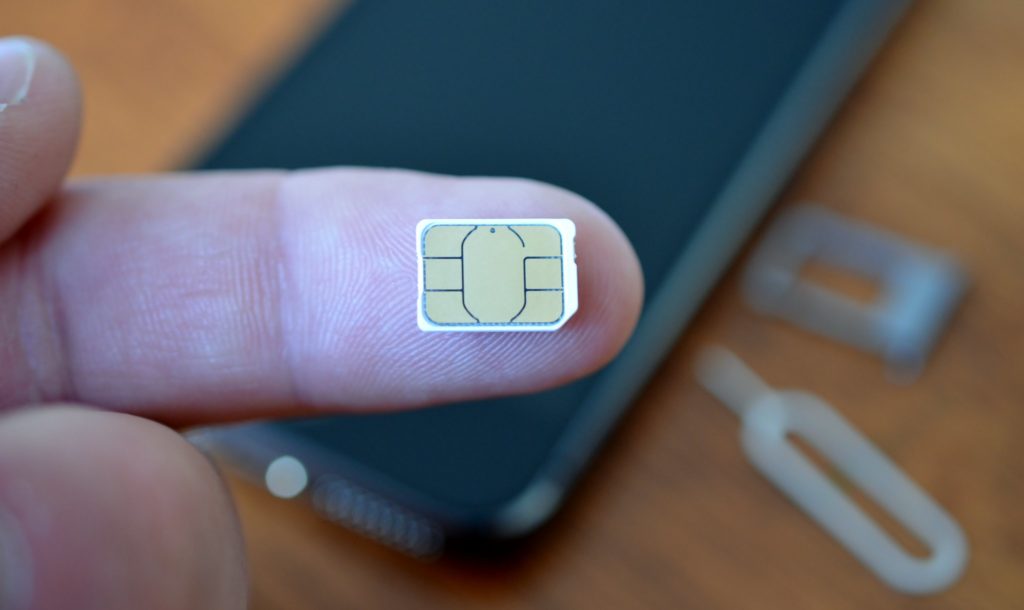
The local SIM option for travelers is a route that we’ve explored on numerous occasions on the site. As wireless services have expanded, different companies have popped up that offer a diverse amount of coverage options. When you’re getting a local SIM card for international travel the traditional route is to get a card that gives you local coverage in the country that you’re visiting. In many instances you’ll be able to get the SIM card at a local store and then insert the SIM card into your phone. This traditional route seems rather antiquated for some people. Particularly with the rise of eSIM technology. We have to admit that there are other options out there that may soon trump the traditional SIM card for international travel.
Still, even though some of the ways to get coverage have changed there are certain concepts that haven’t. One of them being the fact that going out and getting true local coverage is going to be the best way to make sure that you get high speed data and consistent signal in that country. However, if you’re visiting multiple countries on one trip keeping track of the different SIM cards that you collect along the way can be a hassle. Not only with the cards themselves, but the local phone numbers. Is getting a SIM card for international travel still a good option? Yes, the thing is now there are many different ways to get that done. We are going to help you pick the method that suits you best.
- SIM Card for International Travel – The Traditional Way Pros & Cons
- SIM Card For International Travel – The eSIM Route
- Should I Get A Local or Regional SIM Card?
- Portable Wifi
- Should I Just Stick To My Regular Service
- Where You Travel Is Part of the Decision Process
SIM Card for International Travel – The Traditional Way Pros & Cons
The full traditional way to get a SIM card for international travel involves literally going to a local store and getting the SIM card. Then insert it into your phone to get coverage. If you don’t have a dual SIM phone then your regular number is going to be inactive all of the time that you have the local SIM card in. That’s obviously one of the major cons in this situation. As is the fact that you may have to go out and get a SIM card in a language that you don’t speak. Sometimes you’ll be able to order these cards online. They just recharge through an app. Just make sure you buy from a trusted seller. If not a major negative part of the ordeal is that you can potentially get scammed!
If we had to pick though, the one big positive element to using the traditional method it’s the fact that it’s currently available virtually everywhere. You could potentially step into any country in the world and get coverage through a traditional local SIM card. At the time of writing this article eSIM technology has yet to expand to certain parts of the world. The sad part is that it really doesn’t seem like it’s even close to gaining a decent level of penetration worldwide. There are a couple of reasons for that. Mainly because a lot of carriers are finding it hard to try and update their networks and make the full switch to eSIM technology.
SIM Card For International Travel – The eSIM Route

The eSIM route is without an easier path to local coverage. We would suspect that eSIM technology is sooner or later going to take over from regular SIM cards. Therefore, it would be a good idea to try and learn how to use an eSIM in the coming years if not months. The good thing though is that activating an eSIM seems to be one of the easiest things in the world. All that you have to do is scan a QR code and follow the instructions that are going to appear on your screen once you scan the code. The good eSIM providers have done a decent job of simplifying the process. There are various countries in the world where you can access local coverage through an eSIM. We have a couple of articles on that already.
In this case the main problem that you are going to have is accessibility. We mentioned that there are countries out there that are a bit reluctant to get into the eSIM trend. You may have to invest in a new phone also. To make sure that you have a device that is eSIM compatible. Again though, that’s one of those things that’s going to happen sooner rather than later. There’s really no sense in fighting that battle. You’ll for the most part though, still benefit from having a phone that does have a regular SIM port. Just in case you happen to travel to a country where eSIM data isn’t currently available.
Should I Get A Local or Regional SIM Card?
Certainly getting a regional SIM card is something that can attract a lot of people. The thought process is usually that this is a great deal because you can go to Europe and you are going to be able to just use one SIM card for your trip. Essentially that means only having to keep track of one new number that you are going to give to the people that you want to be able to reach you. That also means that you are going to be able to put the SIM card in and not remove it until you land back home. We do see a downside to a regional SIM card for international travel.
The main problem that you could have is that you’re probably going to be able to access better coverage with a local SIM card. We are talking about a French SIM card, and then a Spanish or UK SIM card for your Euro trip. When it comes to the rates you’d just have to make sure that you buy enough data or minutes for the days that you’ll spend in a particular country. Instead of for the whole trip as you would with a European regional card. The rates could be better on a regional SIM card. The coverage though could be better if you bought a SIM card in each country. Just because of where your network is from. That’s what you have to look into!
Portable Wifi

Instead of getting a local SIM card whether it be an eSIM or a regular SIM card you could get a portable Wifi device. What this device does is that it essentially allows you to connect to a local Wifi network that it creates. It’s kind of like if you took your wifi device that you have at home, made it wireless and allowed it to create a network for wherever you are in the world. Portable wifi devices actually work very similar to how SIM cards do. In the sense that you need to buy data for the device to be able to work. What we always say about this option is that we see it as a much more viable option for people who are traveling as a group.
You can actually rent out the device and pay a daily fee for coverage. You’re going to be able to connect multiple devices onto the same network. The reason why we say it’s a better option for groups is because you’re paying one fee for maybe 4 lines. With the local SIM option you’d have to pay per line or make sure that you can use the SIM as a wifispot. The rates for this option are kind of high. You’ll be paying around 7 dollars a day for coverage on a rental. When it comes to strength of the coverage we feel that the local SIM card works better.
Should I Just Stick To My Regular Service?
The SIM card for international travel options can seem like an overly complex system for some people. If we didn’t do enough to simplify it, we apologize. We feel though that it’s important for people to really look into all of the options that are on the table. With that being said, there are a couple of things that you should right off the bat about sticking with your regular service. The main benefit that you are going to have is that you’re going to be reachable at your regular number. With a local SIM card, and without a dual SIM phone that’s not possible. Sadly, most of the good news basically ends there.
What you can mostly expect is bottom tier coverage that can potentially get very expensive. T-Mobile is one of the only American wireless service providers that offers a more “inclusive” roaming program. In the sense that you get a chance to have certain calls and data roaming included in your unlimited plan. However, the speed at which you’ll get the coverage is sub par at best. In most countries that are not Mexico or Canada for US travelers you can expect to pay at least 5 dollars a day for coverage abroad. With 10 dollars a day being the more likely option. Just on cost alone the SIM card for international travel trumps what you’ll get from your regular service. Things may be looking up though.
Where You Travel Is Part of the Decision Process

We just talked about the Canada, and Mexico situation for US travelers. We also referenced the difference between a local and a regional SIM card. So it just makes sense to say that where you travel is going to play a big role in your decision process. Not only where you travel, but how many days you are going to be abroad. For example, with US service providers even if you pay some massive roaming fees, and you actually do pay your bill at the end of the month as you usually would, you won’t be able to get coverage past the 30th day that you’re abroad. If you are going to be traveling for a longer period, the local SIM card for international travel is going to be the only viable way to essentially get your phone to continue to work.
What we typically recommend is that you explore the different options that you are going to have available. There are a ton of articles on this site that cover different scenarios that you may find yourself in that may be worth looking into. Particularly because as you can see by now the best way to get coverage is going to vary depending on a wide array of factors. Hopefully, you have a better idea of what you want to do to get that convergence after reading all of this.
SIM Card For International Travel – Conclusion
If you are looking for where you can buy a SIM card for international travel we have other articles on that, which we will gladly link to here. Now, if you read through some of the other articles on the site you’ll know that we are fans of the SIM card option. Even going back to the days where you had no choice, but to deactivate your local phone to be able to get coverage in the country that you were visiting. The simple reason why we are big fans of this option is because you can get more coverage at a better price with a local SIM card than you ever could get through roaming or international plans with your regular provider.
Of course, we also understand that there are a lot of things that you’re going to want to factor in. Some people have told us that they don’t mind paying a little extra for roaming or the international pass because it takes away the hassle of the whole process that we just described. We would actually agree if you are going to be abroad for just a couple of days some roaming options aren’t drastically expensive. Then again it depends on where you travel. What we do want to say is that in general you shouldn’t be afraid of the local SIM card option!
Get An E-SIM Card To Access Low Cost Coverage In Any Country In The World

In doing so you’ll be supporting us create more content to help you find coverage as you travel. At the same time you may be solving the issue that you came here for help on!
